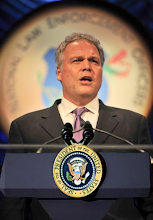The name Tate was familiar to generations of Britons because Tate and Lyle was the most common brand of sugar on sale. In other words, the Tate fortune that built and stocked the gallery had its roots in the sugar plantations, and therefore slavery, too, though by the time the gallery was opened in the last years of the 19th century, slavery had been banished from Britain for many decades.

J. M. W. Turner had died in 1856, leaving a huge legacy of his paintings to the National Gallery, which had been founded during his lifetime. His early intentions were to have his works exhibited alongside those of the Masters who had inspired him. In fact, he had produced many of his paintings as direct challenges to the works of artists both living and long dead.
The difficulty was to find somewhere to display them. There has always been supposed to be - but never has been - a dedicated Turner Gallery. Some of the biggest, finest paintings are in the National Gallery, most of the others have been on display at the Tate for decades. More recently there has been an exhibition of others at the Courtauld Gallery in Somerset House, which used to be the records office of births, marriages and deaths.
The Tate has decided to mount an exhibition of a selection of Turner's paintings alongside the pictures - by people like Rubens and Rembrandt - whose art he tried to challenge.

His challenges were usually more than successful. I haven't included paintings by the other artists (it was hard enough to find the relevant Turners on the Internet) but here are a few of the wonderful pieces he painted in response to other pictures he saw and places he visited.
His seascapes - like Peace: Burial at Sea - are in my opinion unrivalled.
Canaletto's crisp renderings of the same subject.

His classical scenes, like this one of Dido's Carthage,
illustrate Turner's innovative use of colour to express light.

By the end of his long life, this diminutive Cockney artist was creating pictures that were almost completely made up of his representations of light. They are abstract in the extreme. But he remains my favourite artist. You can keep your Constables. Give me a Turner storm at sea any day.
Today my old school friend Jenny (who introduced me to Turner over 40 years ago) went to see the exhibition. It was great, but it was not enough. We had to go upstairs to the Turner Galleries afterwards to get a bigger fix.



7 comments:
The top pic of the three, and the last one...just beautiful. I can't say I've ever really paid attention to the work of Turner, but I have a feeling that will have to change.Wonder if they have any at the Ashmolean?
I answered my own question..he did some lovely Oxford paintings, which they have at the museum.it re-opens next week and I think a trip might just be in order :-)
I love Dido's Carthage. It's very Hudson River School looking. Thanks for the art lesson! I would love to visit those museums.
Apparently they took their influence from the European Masters, JoJo. (I just Googled it!)
exquisite - i can see why you you're a fan - the tate modern, rather than the real thing, is one of my ab fav haunts - glad you enjoyed your culture fix
You always come up with the most interesting things. Love your blog.
♥♥♥
Beautiful work! No wonder you're such a big fan!
Post a Comment